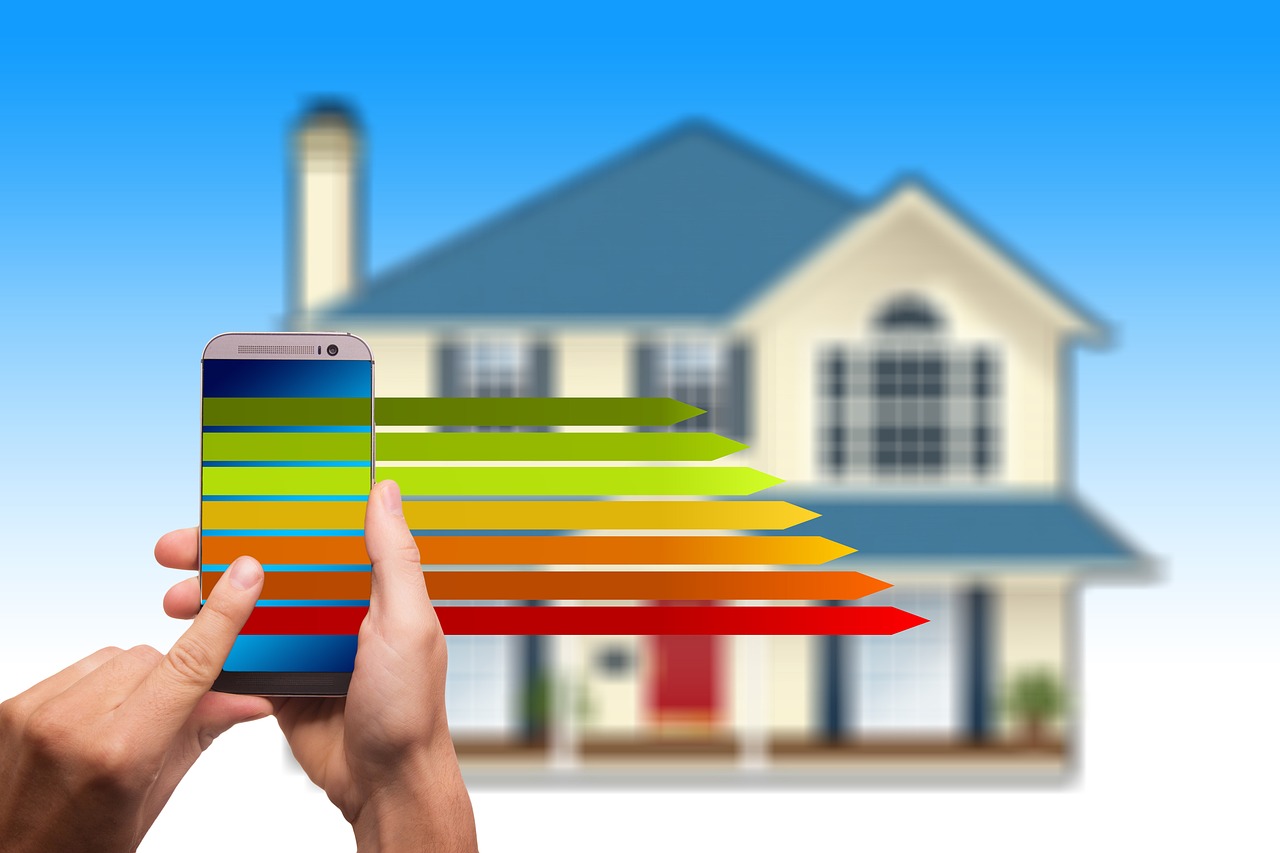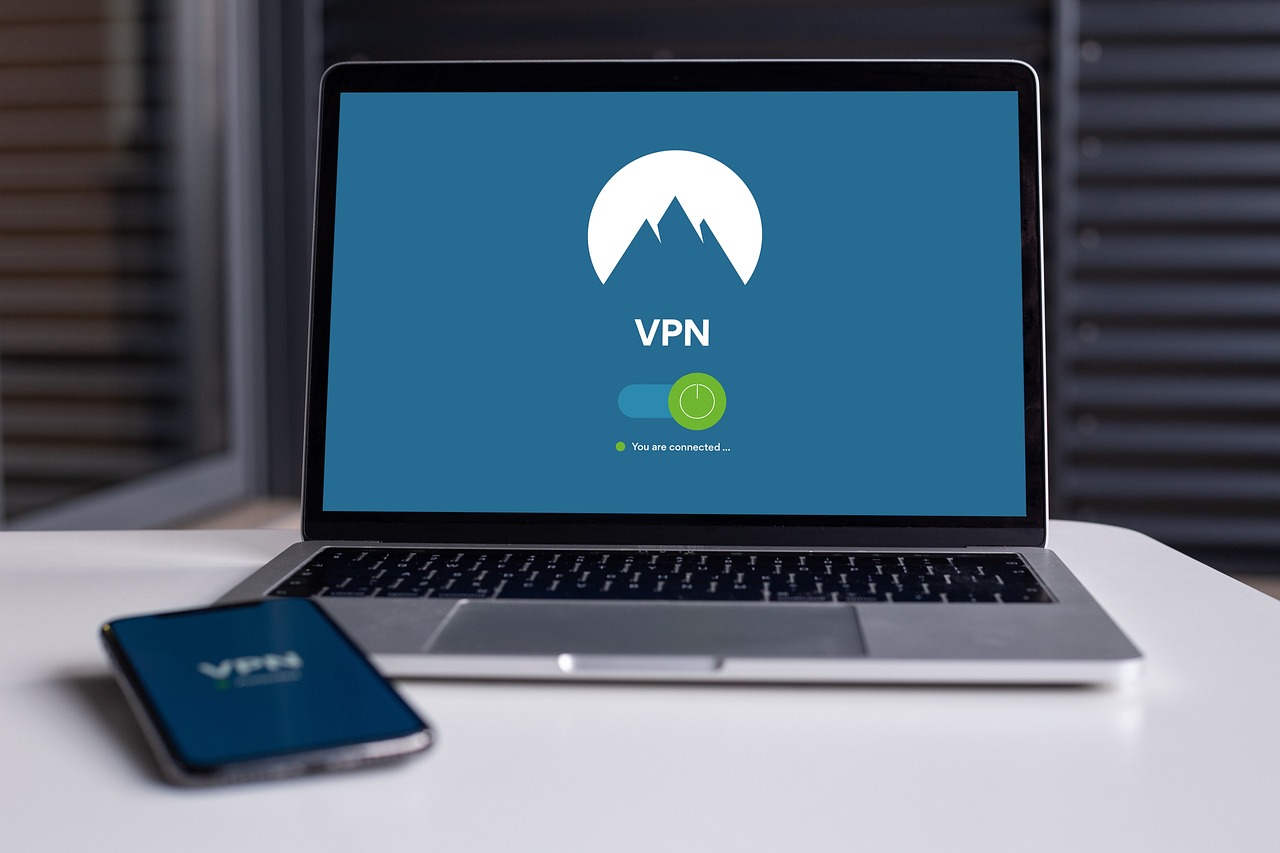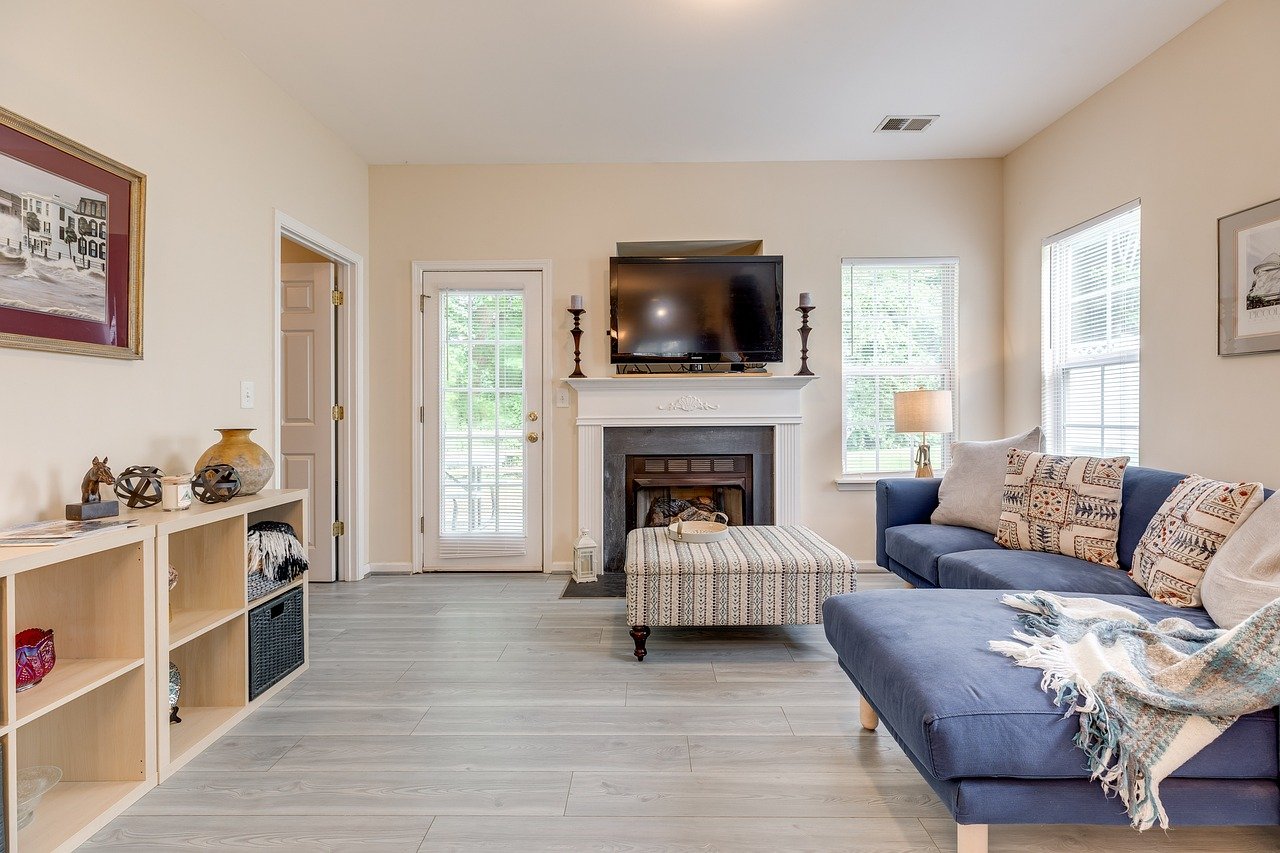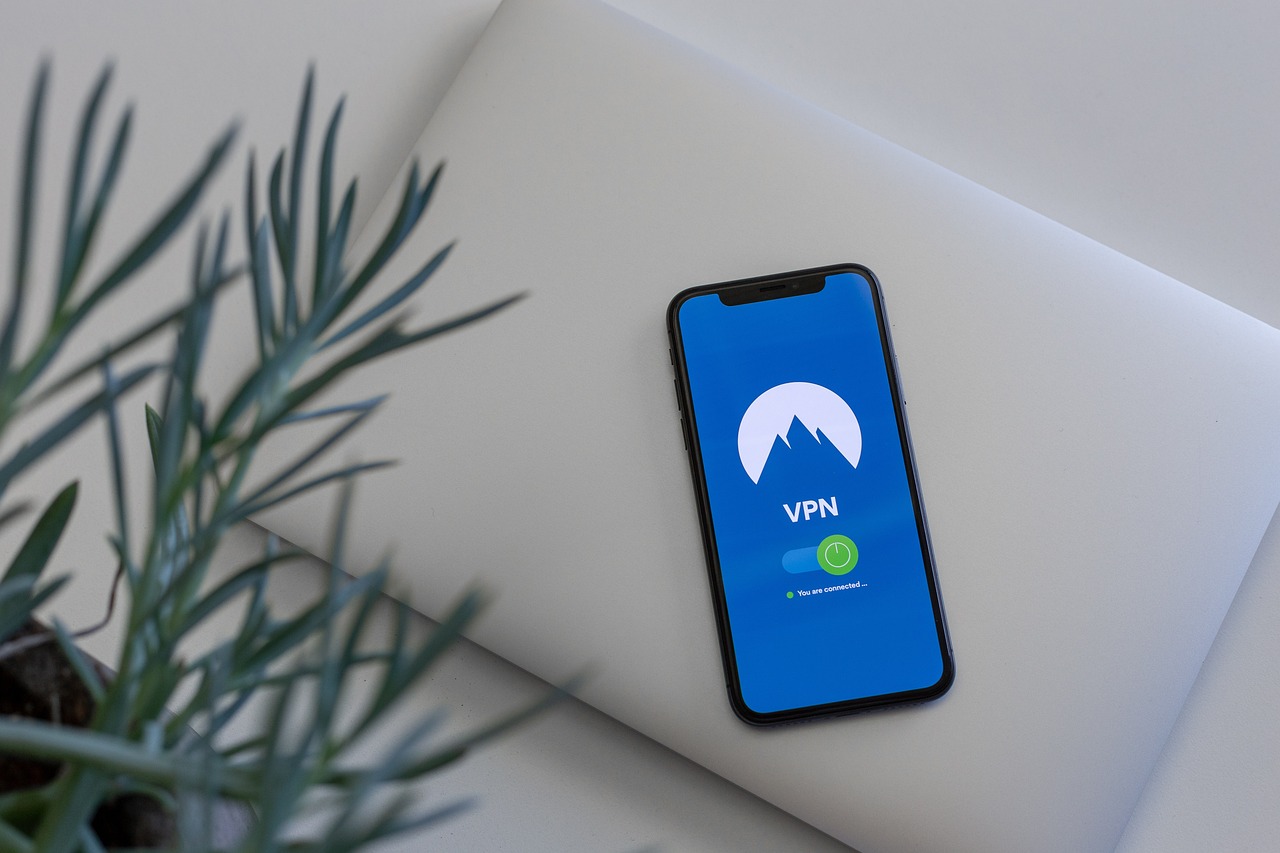Home Security Training for You and Your Family
In today's world, where unexpected events can happen at any moment, ensuring the safety of your home and loved ones has never been more crucial. Home security training is not just about installing alarms or locks; it's about fostering a culture of awareness and preparedness within your family. Imagine the peace of mind that comes from knowing that everyone in your household is equipped to handle potential threats. This article provides essential insights into home security training, emphasizing the importance of safety awareness and practical strategies for families to enhance their home security measures effectively.
Before diving into specific strategies, it's important to grasp the fundamental concepts of home security. Awareness is the cornerstone of safety; being alert to your surroundings can help you identify potential risks before they escalate. Start with a thorough risk assessment of your home. Walk around your property and ask yourself: What could be a potential entry point for an intruder? Are there any areas that lack adequate lighting? Addressing these questions can help you implement basic safety measures that every family should adopt, such as locking doors and windows, keeping valuables out of sight, and maintaining a well-lit exterior.
Having a comprehensive safety plan is crucial for any family. This plan should involve all family members, ensuring everyone knows their role during a crisis. Start by establishing clear communication strategies. For instance, designate a safe meeting spot outside your home where everyone can gather in case of an emergency. Involve your kids in this process; not only will it empower them, but it will also make them feel more secure. Regular discussions about emergency procedures can turn a potentially frightening situation into a manageable one.
One of the first steps in enhancing your home security is identifying vulnerable areas that may attract intruders. Begin by evaluating the following entry points:
- Front and back doors
- Windows on the ground floor
- Garage doors
- Basement windows
Look for signs of wear and tear on locks and hinges, and consider whether your landscaping provides cover for potential intruders. By addressing these vulnerabilities, you can significantly reduce the likelihood of a break-in.
Now that you’ve identified vulnerable areas, it’s time to secure them. Invest in high-quality locks for your doors and windows. Consider adding deadbolts for extra security. Alarm systems can also be a deterrent; many modern systems come equipped with features like motion sensors and alerts sent directly to your smartphone. Don’t forget about your garage—ensure it’s secured with a reliable lock, and keep it closed when not in use.
Your home’s exterior is just as important as the interior when it comes to security. Effective outdoor security measures include:
- Installing motion-activated lights to illuminate dark areas
- Using landscaping to create visibility—avoid tall bushes near entry points
- Setting up surveillance cameras that can monitor your property
These steps not only deter intruders but also provide a sense of security for your family.
Understanding how to react in emergencies is vital. Conduct training sessions with your family on what to do in case of a break-in, fire, or other crises. Role-playing different scenarios can help everyone feel more prepared. For example, practice how to escape in case of a fire or how to contact emergency services quickly. The more familiar everyone is with the plan, the less panic there will be in real-life situations.
Modern technology offers numerous tools for enhancing home security. Smart home devices can be game-changers in how families monitor and protect their homes. These devices aren't just for tech-savvy individuals; they are user-friendly and accessible for everyone.
Smart security systems, including cameras, alarms, and sensors, can provide real-time alerts and remote monitoring capabilities. Imagine being able to check your security cameras from your phone while you’re away on vacation. This level of control and awareness can significantly enhance your peace of mind.
Don’t overlook the power of mobile applications. Many apps can assist in managing home security, from surveillance to emergency alerts. These tools ensure your family stays connected and informed, even when you’re not at home.
Regular security drills are essential for preparedness. Practicing your safety plan ensures everyone knows their roles and can react swiftly in an emergency. Schedule these drills at least once a year and consider varying the scenarios to keep everyone on their toes. Remember, the goal is to create a sense of security and confidence within your family.
Q: How often should we review our home security plan?
A: It's recommended to review your home security plan at least once a year or after any significant life change, such as moving or a family member leaving home.
Q: What should we do if we suspect a break-in?
A: Stay calm, avoid confrontation, and call the authorities immediately. Ensure everyone in the household knows to stay quiet and hidden until help arrives.
Q: Are smart home devices safe?
A: While smart devices can enhance security, ensure they are properly secured with strong passwords and updated regularly to protect against vulnerabilities.

Understanding Home Security Basics
When it comes to protecting your home and loved ones, understanding the basics of home security is crucial. Imagine your home as a fortress; if you don’t know where the weak spots are, how can you defend against intruders? The first step in enhancing your home security is to cultivate an awareness of your surroundings and the potential risks that could threaten your safety. It’s not just about installing a fancy alarm system; it’s about creating a culture of security within your family.
One of the fundamental concepts of home security is risk assessment. This involves identifying potential threats and evaluating the likelihood of these threats occurring. For instance, consider the various entry points into your home—doors, windows, garages, and even basements. Each of these areas should be scrutinized for vulnerabilities. Ask yourself: Are the locks strong enough? Is there adequate lighting around these entry points? By conducting a thorough risk assessment, you can prioritize your security improvements and allocate resources effectively.
Moreover, basic safety measures are essential for every family. These measures can include:
- Installing sturdy locks on all doors and windows.
- Using deadbolts for added security.
- Ensuring that outdoor lighting is functional and bright.
- Keeping bushes and trees trimmed to eliminate hiding spots for potential intruders.
By implementing these simple yet effective strategies, you can significantly enhance your home’s security. But remember, security is not a one-time effort; it requires continuous vigilance and adaptation to new threats. Make it a habit to regularly review your home security measures and stay informed about the latest safety technologies and practices. After all, in the world of home security, knowledge is power, and preparation is key!

Creating a Family Safety Plan
When it comes to protecting your home and loved ones, having a solid family safety plan is like having a roadmap in uncharted territory. You wouldn't embark on a journey without a plan, right? Similarly, when it comes to home security, a well-thought-out strategy is essential. This plan should involve every family member, ensuring that everyone knows their role and what to do in case of an emergency. After all, safety isn't just a solo mission; it’s a family affair!
First things first, it’s crucial to establish clear roles within your family. Each member should know what is expected of them during an emergency. For instance, parents might take on the responsibility of securing the home while the children focus on gathering in a safe area. This division of responsibilities not only streamlines the response but also empowers everyone by giving them a sense of purpose. You might even consider creating a simple chart that outlines these roles and displaying it in a common area of your home.
Communication is the backbone of any effective safety plan. Make sure to discuss how your family will communicate during an emergency. Will you use a group chat, or perhaps a designated meeting spot outside the home? Establishing a reliable communication strategy ensures that no one is left in the dark, even when the unexpected strikes. For example, you might want to set up a family text chain or a specific whistle signal that everyone recognizes. Remember, in moments of panic, clarity is key!
Next, it's vital to outline emergency procedures. Think about various scenarios: what if there’s a break-in, a fire, or even a natural disaster? Each situation requires a different response, and having these procedures written down can make a world of difference. You can create a simple table to summarize these procedures, making it easy for everyone to refer back to when needed.
| Emergency Situation | Action Steps |
|---|---|
| Break-in | 1. Call 911 2. Find a safe room 3. Stay quiet and hidden |
| Fire | 1. Evacuate immediately 2. Use the nearest exit 3. Call the fire department |
| Natural Disaster | 1. Seek shelter 2. Follow local emergency instructions 3. Stay informed via radio or app |
Finally, practice makes perfect! Regularly conducting safety drills ensures that everyone in your family is comfortable with the plan and knows exactly what to do when the moment arrives. These drills can be as simple as walking through the steps or as involved as simulating a real emergency. The more familiar everyone is with the plan, the more confident and prepared they will feel when faced with a real crisis.
In conclusion, creating a family safety plan is not just about checking a box; it’s about fostering a culture of safety and preparedness within your home. By involving every family member, establishing clear roles, and practicing regularly, you’re not just enhancing your home security—you’re building a stronger, more resilient family unit. So gather your loved ones, sit down together, and start crafting your family safety plan today. It’s a small investment of time that can yield invaluable peace of mind!
- Why is a family safety plan important? A family safety plan ensures that everyone knows their roles and responsibilities during an emergency, which can save lives and reduce panic.
- How often should we practice our safety plan? It’s recommended to conduct drills at least twice a year, but more frequent practices can help reinforce the plan.
- What should we include in our emergency procedures? Include steps for various scenarios such as break-ins, fires, and natural disasters, along with communication strategies.

Identifying Vulnerable Areas
When it comes to home security, one of the most critical steps is around your property. Think of your home as a fortress; you wouldn’t leave the gates unguarded, right? The first step in fortifying your castle is to conduct a thorough assessment of potential weak spots that could be targeted by intruders. This process not only helps in understanding where your home is most at risk but also empowers you to take proactive measures to enhance your security.
Start by examining the entry points to your home. Doors and windows are the most common access points for burglars. Are your doors solid and equipped with deadbolt locks? Do your windows have secure latches? If you find any doors that are flimsy or windows that can easily be opened, it’s time to consider upgrades. You might be surprised to learn that over 30% of burglars enter through an unlocked door or window, which highlights the importance of ensuring these points are always secured.
Next, take a good look at your landscaping. Overgrown bushes and trees can provide cover for potential intruders. Trim back any foliage that could obscure the view of your home from the street or your neighbors. Additionally, consider the placement of outdoor lighting; well-lit areas deter criminals. Installing motion sensor lights can be a game changer, as they startle potential intruders and draw attention to suspicious activity.
Another area to assess is your garage. Many people overlook this space, but garages can serve as an easy entry point for burglars, especially if they’re connected to your home. Ensure that your garage door is equipped with a reliable locking mechanism, and consider installing a security camera to monitor this area. Remember, a secure garage not only protects your vehicle but also acts as a barrier to your home.
Finally, don’t forget about your neighborhood. Familiarize yourself with the crime rates in your area. Are there any recent reports of break-ins? Engaging with your neighbors can create a community watch that enhances the security of your entire street. Consider forming a local group where everyone can share tips and keep an eye out for suspicious activity. After all, it takes a village to keep everyone safe!
By taking the time to identify and address these vulnerable areas, you’ll create a much safer environment for you and your family. Remember, being proactive about home security is always better than being reactive. So, grab a notepad, walk around your home, and start assessing those potential weak points today!
- What are the most common vulnerable areas in a home? The most common vulnerable areas include doors, windows, garages, and poorly lit outdoor spaces.
- How can I assess the security of my home? Conduct a thorough walk-around, checking all entry points, outdoor lighting, landscaping, and potential hiding spots for intruders.
- Should I involve my neighbors in my home security efforts? Absolutely! A community watch can significantly enhance security and deter intruders.

Securing Entry Points
When it comes to home security, entry points are your first line of defense. These are the areas where intruders are most likely to gain access to your home, so it’s crucial to secure them effectively. Think of your home as a fortress; if the gates are weak, the entire structure can be compromised. Start by examining all the entry points in your home, including doors, windows, and even the garage. Each of these areas presents unique vulnerabilities that require tailored security measures.
First off, let’s talk about doors. A sturdy door is your best friend. Invest in solid wood or metal doors that can withstand force. Additionally, ensure that all doors have high-quality deadbolt locks. These locks are far superior to standard spring bolt locks, providing an extra layer of security. Consider installing a peephole or a smart doorbell camera, allowing you to see who’s at your door before opening it. This simple addition can deter potential intruders who may think twice if they know they’re being watched.
Next, we move to windows—often considered the weakest link in home security. Many people overlook them, thinking that a simple latch is sufficient. However, it’s essential to install window locks and consider adding window sensors that alert you if they are opened unexpectedly. For added protection, window film can reinforce glass and make it more difficult to break. If you have sliding glass doors, place a wooden dowel or a security bar in the track to prevent them from being forced open.
Don’t forget about the garage! It often serves as an entry point that many homeowners neglect. Make sure the garage door is equipped with a strong lock and consider upgrading to a smart garage door opener that allows you to control access remotely. This way, you can monitor who enters and exits your garage, keeping your valuables safe.
In addition to physical barriers, consider integrating security systems that monitor entry points. A comprehensive system will include motion sensors and alarms that alert you to any unauthorized access. Some systems even allow you to receive notifications on your smartphone, giving you peace of mind whether you’re at home or away.
In summary, securing entry points is about being proactive rather than reactive. By investing in solid doors, high-quality locks, window security measures, and advanced monitoring systems, you can significantly reduce the risk of a break-in. Remember, a well-secured home not only protects your belongings but also provides a safe haven for you and your loved ones.
- What are the most vulnerable entry points in a home? Typically, windows and garage doors are considered the most vulnerable entry points, as they are often less secure than front doors.
- How can I tell if my doors and windows are secure enough? Ensure that all entry points have high-quality locks, and consider conducting a security assessment to identify weaknesses.
- Are smart locks worth the investment? Yes, smart locks offer convenience and enhanced security features, allowing you to monitor access remotely.
- What should I do if I suspect someone is trying to break into my home? Contact local authorities immediately and avoid confronting the intruder yourself.

Outdoor Security Measures
When it comes to enhancing your home’s security, the outdoors is often the first line of defense. Think of your home as a fortress; the outer walls need to be as fortified as the inner ones. Outdoor security measures are not just about aesthetics; they play a crucial role in deterring potential intruders. One of the most effective ways to enhance outdoor security is through proper lighting. Well-lit areas act as a deterrent, making it difficult for anyone with ill intentions to approach your home unnoticed. Consider installing motion-sensor lights that activate when movement is detected. This not only conserves energy but also surprises unwanted guests, giving them a reason to think twice.
Another critical aspect is landscaping. While you may love that tall shrubbery or those beautiful hedges, they can provide cover for intruders. Keeping your landscaping well-maintained is essential. Trim any bushes that might obscure windows or doors, and avoid planting trees too close to your home that could provide easy access to upper floors. Instead, create a clear line of sight around your property. This can be achieved by using low-growing plants and keeping larger ones away from key entry points.
Additionally, installing a security fence can significantly enhance your outdoor security. A sturdy fence not only marks your property but also adds an extra layer of protection. When choosing a fence, opt for materials that are difficult to climb, and consider adding a locked gate. This is where you can also incorporate technology; smart locks can be an excellent addition to your outdoor security measures.
Surveillance systems are another formidable tool in your outdoor security arsenal. Cameras placed strategically around your home can provide peace of mind and serve as a powerful deterrent. Modern surveillance systems come equipped with features like night vision, motion detection, and remote access via smartphones. This means you can monitor your property in real time, no matter where you are. Imagine being able to check on your home while you’re on vacation or at work; it’s like having a virtual security guard!
To sum up, here are some key outdoor security measures to consider:
- Lighting: Install motion-sensor lights to illuminate dark areas.
- Landscaping: Maintain clear sightlines and trim any overgrown plants.
- Fencing: Use sturdy materials and secure your gates.
- Surveillance: Implement a smart security camera system for monitoring.
By integrating these outdoor security measures, you not only enhance the safety of your home but also create a welcoming environment. Remember, a well-protected home is a happy home, and taking these steps can give you the peace of mind you deserve.
Q1: What are the best outdoor lighting options for home security?
A1: Motion-sensor lights and solar-powered lights are excellent choices as they provide illumination only when needed, saving energy while deterring intruders.
Q2: How can I make my landscaping more secure?
A2: Keep plants trimmed to avoid creating hiding spots, and use low-growing plants near windows and doors for better visibility.
Q3: Are security cameras worth the investment?
A3: Absolutely! Security cameras not only deter crime but also provide valuable evidence in case of an incident.
Q4: What type of fence is best for security?
A4: A tall, sturdy fence made of materials like wood or vinyl, combined with a locked gate, can significantly enhance your home's security.

Emergency Response Training
When it comes to home security, having a robust plan is like having a safety net woven into the fabric of your family's daily life. Imagine a situation where every family member knows exactly what to do when the unexpected happens—whether it's a break-in, a fire, or even a natural disaster. This training isn't just a precaution; it's a lifeline that can make all the difference in a crisis. So, how can you ensure that your loved ones are prepared for emergencies? Let's dive into the essentials.
First and foremost, it’s crucial to educate everyone in your household about the potential threats they might face. This education should include discussions about various scenarios, such as what to do if someone tries to break into your home or how to react if there’s a fire. By familiarizing your family with these situations, you’re not just informing them; you’re empowering them to act decisively. Consider holding family meetings where you can role-play different emergency scenarios. This can be both an educational experience and a bonding activity.
Next, establish clear emergency procedures that everyone can follow. For instance, designate a safe meeting point outside your home where everyone should gather in case of an evacuation. This not only helps ensure that everyone is accounted for but also reduces panic during a chaotic situation. Additionally, make sure that all family members know how to contact emergency services and have a list of important phone numbers readily available. Here’s a quick table to illustrate some key emergency contacts you might want to compile:
| Contact Type | Phone Number |
|---|---|
| Emergency Services (Police, Fire, Ambulance) | 911 |
| Family Doctor | [Your Doctor's Number] |
| Poison Control | 1-800-222-1222 |
| Trusted Neighbor | [Neighbor's Number] |
In addition to having a plan, practicing that plan is essential. Regular security drills can help reinforce these procedures. Schedule drills at least once a year, or more frequently if possible, to keep everyone sharp. During these drills, simulate various emergency situations and have family members practice their responses. This not only builds confidence but also helps identify any areas of your plan that may need improvement. Remember, the goal is to make these drills as realistic as possible without causing fear or anxiety.
Moreover, don't forget to include children in the training process. Kids can often be the most vulnerable during emergencies, so teaching them what to do can significantly enhance their safety. Use age-appropriate language and activities to engage them. For instance, you might create a fun game where they have to find the safest exit from the house or memorize emergency contact numbers. This way, they feel included and are more likely to remember what to do when it counts.
Finally, it’s essential to review and update your emergency response plan regularly. Life changes, and so do the dynamics of your household. New family members, pets, or even changes in your home’s layout can affect your safety plan. By keeping your plan current, you ensure that everyone remains informed and prepared, no matter what life throws at you.
In summary, is not just about knowing what to do; it's about fostering a culture of safety within your home. By educating your family, establishing clear procedures, practicing regularly, and keeping your plan updated, you create a protective environment where everyone feels secure. So, gather your family, start the conversation, and take the first step towards a safer home today!
- What should I include in my emergency response plan? Your plan should include emergency contact numbers, evacuation routes, meeting points, and procedures for various emergencies.
- How often should I conduct emergency drills? It's recommended to conduct drills at least once a year, but more frequent drills can help keep everyone prepared.
- How can I make emergency training fun for kids? Use games and role-playing scenarios to engage them and make learning about safety enjoyable.
- What technology can assist in emergency response? Consider using mobile apps that provide emergency alerts, safety tips, and contact information.

Utilizing Technology for Security
In today's fast-paced world, technology plays a crucial role in enhancing our home security measures. With the rise of smart home devices and advanced security systems, families can now monitor their homes like never before. Imagine being able to check on your property from anywhere in the world, all from your smartphone! This level of convenience and peace of mind is not just a luxury; it's becoming a necessity for many households. So, how can you leverage these technological advancements to bolster your home security?
First and foremost, investing in smart security systems can be a game-changer. These systems typically include a combination of cameras, alarms, and sensors that work together to provide comprehensive coverage of your property. For instance, many modern cameras come equipped with motion detection and night vision capabilities, allowing you to monitor your home around the clock. Furthermore, with features such as remote access, you can receive real-time alerts on your smartphone whenever suspicious activity is detected. This means you can take immediate action, whether that’s contacting the authorities or simply scaring off an intruder by activating your outdoor lights.
Moreover, mobile security apps have revolutionized the way we manage our home security. These applications allow you to control various aspects of your security system, from locking doors to viewing live camera feeds. Imagine being at work and receiving a notification that your front door has been opened. With just a few taps on your phone, you can check the camera feed to see who is at the door and even communicate with them through two-way audio. This level of interaction provides an added layer of security, as it can deter potential intruders who might think twice if they know they're being watched.
To give you a clearer picture, let's take a look at some popular features of smart security systems and mobile apps:
| Feature | Description |
|---|---|
| Motion Detection | Alerts you when movement is detected in or around your home. |
| Live Streaming | View real-time video feeds from your security cameras. |
| Remote Access | Control your security system from anywhere using your smartphone. |
| Two-Way Audio | Communicate with visitors or intruders through your camera. |
| Emergency Alerts | Receive notifications for emergencies like break-ins or fires. |
It's also essential to consider the integration of these technologies. Many smart home devices can work together seamlessly; for example, your smart doorbell can notify you of visitors, while your smart locks can automatically secure your doors when you leave home. This interconnectedness not only simplifies your security management but also enhances your overall safety. Imagine a scenario where your home lights flash when your security alarm is triggered, alerting neighbors and deterring intruders at the same time!
However, while technology offers incredible benefits, it's important to stay informed about potential vulnerabilities. Cybersecurity is a significant concern, especially when it comes to smart devices that connect to the internet. Always ensure that your devices are updated with the latest security patches and consider using strong, unique passwords for each device. Remember, a secure home is not just about physical barriers; it's also about digital safety.
In conclusion, utilizing technology for home security is not just about installing a few devices; it's about creating a comprehensive security ecosystem that works for you and your family. By embracing smart security systems and mobile apps, you can enhance your home’s safety and gain peace of mind, knowing that you have taken proactive steps to protect what matters most.
- What are the benefits of a smart security system? Smart security systems provide real-time alerts, remote monitoring, and the ability to control your security devices from anywhere.
- How can I make sure my smart devices are secure? Regularly update your devices, use strong passwords, and ensure your home Wi-Fi network is secured.
- Are mobile security apps easy to use? Yes, most mobile security apps are designed to be user-friendly, allowing you to manage your security with just a few taps.

Smart Security Systems
In today's fast-paced world, have become a cornerstone of home safety. These innovative technologies not only provide peace of mind but also empower homeowners with the tools to monitor and protect their properties like never before. Imagine being able to check on your home while you're miles away, all from the palm of your hand! With smart security systems, this is not just a dream; it's a reality.
At the heart of these systems are various components designed to work together seamlessly. Smart cameras, alarms, and sensors can alert you to any unusual activity, giving you the ability to react quickly. For instance, if a motion sensor detects movement in your yard, you can receive an instant notification on your smartphone, allowing you to assess the situation in real-time. This level of connectivity can be a game-changer, especially in emergencies.
One of the most appealing features of smart security systems is their remote monitoring capabilities. Many systems come equipped with mobile apps that allow you to view live feeds from your security cameras. This means you can check in on your home while at work, on vacation, or even during a late-night outing. The convenience of having this access at your fingertips is invaluable. Plus, with cloud storage options, you can save footage for later review, providing an extra layer of security.
Moreover, smart security systems often integrate with other smart home devices, creating a comprehensive safety net for your family. For example, you can set your lights to turn on automatically when your security camera detects motion, making it appear as though someone is home even when you're not. This can be a powerful deterrent against potential intruders. The beauty of these systems lies in their versatility and adaptability to your specific needs.
To give you a clearer picture of what these systems can offer, here’s a table comparing some popular smart security systems on the market:
| System Name | Key Features | Price Range |
|---|---|---|
| Ring | Video Doorbell, Indoor/Outdoor Cameras, Smart Lighting | $99 - $499 |
| Arlo | Wireless Cameras, Night Vision, 2-Way Audio | $129 - $599 |
| Google Nest | Smart Doorbell, Indoor/Outdoor Cameras, Integration with Google Home | $199 - $499 |
As you can see, the options are vast, and each system brings unique features to the table. When choosing a smart security system, consider what fits your lifestyle and security needs best. Are you looking for comprehensive surveillance, or do you need a simple solution to monitor your front door? The right choice can significantly enhance your home security.
In conclusion, investing in a smart security system is not just about keeping your belongings safe; it's about creating a secure environment for your loved ones. With the added benefits of remote monitoring and integration with other smart devices, these systems are a worthwhile consideration for any homeowner. So, why wait? Take the plunge into the world of smart security and give your family the protection they deserve!
Here are some common questions regarding smart security systems:
- How do smart security systems work? They typically use a network of devices that communicate with each other via Wi-Fi, allowing for real-time monitoring and alerts.
- Can I install a smart security system myself? Yes, many systems are designed for easy DIY installation, but professional installation is also available if preferred.
- Are smart security systems compatible with other smart home devices? Most modern systems can integrate with various smart home devices, enhancing overall functionality.

Mobile Security Apps
In today’s fast-paced world, where everything is just a tap away, have revolutionized the way we protect our homes. Imagine being able to keep an eye on your property from anywhere in the world, whether you're on vacation or just at work. These apps provide a level of convenience and security that was once unimaginable. They allow you to monitor your home in real-time, receive alerts about suspicious activity, and even control your security devices remotely. But with so many options available, how do you choose the right one for your family's needs?
First, it’s important to understand the features that make a mobile security app truly effective. Most apps offer functionalities like live video streaming, motion detection alerts, and two-way audio communication. Some even integrate with smart home devices, allowing you to control lights, locks, and cameras all from one platform. This integration not only enhances your security but also makes managing your home easier.
Here are some key features to look for in a mobile security app:
- Real-time Alerts: Immediate notifications when motion is detected or doors are opened can help you respond to potential threats quickly.
- Video Monitoring: Access to live feeds from security cameras allows you to check in on your home anytime.
- Remote Access: Control your security devices from anywhere, giving you peace of mind whether you're home or away.
- Integration Capabilities: Choose an app that works with your existing smart home devices for seamless security management.
One popular choice among homeowners is the Ring app, which connects with Ring cameras and doorbells, providing a comprehensive view of your home’s exterior. Another great option is the Arlo app, known for its user-friendly interface and high-quality video feeds. Both apps not only keep you informed but also enable you to take action if something seems off.
Additionally, many of these apps offer cloud storage for recorded footage, which can be invaluable in the event of a break-in. Having access to video evidence can assist law enforcement in their investigations and provide you with peace of mind. However, it’s essential to consider the subscription costs associated with these services, as they can vary significantly.
To summarize, mobile security apps are a game-changer in home security. They empower you to monitor your home, respond to alerts, and manage your devices from the palm of your hand. Investing in the right app can enhance your family's safety and provide you with the reassurance that your home is secure, no matter where you are.
Q: Are mobile security apps easy to use?
A: Most mobile security apps are designed with user-friendliness in mind. They typically feature intuitive interfaces that make it easy for anyone to navigate and set up.
Q: Do I need a subscription for mobile security apps?
A: While many apps are free to download and use basic features, some may require a subscription for advanced functionalities like cloud storage or additional camera support.
Q: Can I access my security app remotely?
A: Yes, one of the main advantages of mobile security apps is that they allow you to monitor and control your security devices from anywhere with an internet connection.
Q: What if my internet goes down?
A: Many security systems have backup options, such as local storage or cellular backup, which can continue to operate even if your internet connection is lost.

Conducting Regular Security Drills
When it comes to home security, preparation is key. Just like a fire drill at school, conducting regular security drills at home can be the difference between chaos and calm during an emergency. Imagine this: you hear a loud noise in the middle of the night. Your heart races, and panic sets in. But what if you and your family had practiced what to do in that exact scenario? Regular security drills help ensure that everyone knows their roles and can react swiftly, effectively transforming a potentially dangerous situation into a manageable one.
So, how do you go about conducting these drills? First, gather your family and discuss the importance of these exercises. It's crucial that everyone understands the *why* behind the drills. You might even want to create a family safety plan that outlines the steps to take during different emergencies, such as a break-in or fire. This plan should be easily accessible, perhaps posted on the fridge or saved on everyone’s phones, so it’s always within reach.
Next, choose specific scenarios to practice. Here are some examples:
- What to do in case of a break-in
- How to respond to a fire alarm
- Where to meet after evacuating the house
Once you've outlined the scenarios, it’s time to put them into action. Set a date and time for the drill, and make it a family event. You could even turn it into a game to keep things light-hearted. For instance, time how quickly everyone can get to the designated meeting spot. This not only adds a fun element but also encourages participation. Remember, the goal is to make everyone feel comfortable and confident in their responses.
After the drill, hold a debriefing session. Discuss what went well and what could be improved. This feedback loop is essential for refining your family’s response plan. Perhaps someone forgot a crucial step, or maybe you discovered a weakness in your plan that needs addressing. Use this time to make adjustments and ensure everyone is on the same page.
Additionally, consider incorporating technology into your drills. For example, if you have smart security devices, practice using them during your drills. Teach family members how to operate the alarm system, lock doors remotely, and use any surveillance cameras effectively. Familiarity with these tools can significantly enhance your home security and give everyone peace of mind.
In summary, conducting regular security drills is not just a good idea; it’s a *necessity* for ensuring your family’s safety. By practicing various scenarios, discussing your safety plan, and utilizing technology, you empower your family to respond effectively in emergencies. Remember, preparation breeds confidence, and confidence can make all the difference when it matters most.
Q: How often should we conduct security drills?
A: It's recommended to conduct security drills at least twice a year. However, if you have young children or if your family dynamics change, consider doing them more frequently.
Q: What if my family doesn’t take the drills seriously?
A: Make the drills engaging and fun! Incorporate games or rewards for participation. Emphasizing the importance of safety in a light-hearted way can help them take it more seriously.
Q: Should we involve neighbors in our drills?
A: Absolutely! Involving neighbors can create a stronger community response plan. You can coordinate drills together, which can also help everyone feel more secure.
Frequently Asked Questions
- What is home security training?
Home security training involves educating you and your family about safety awareness, risk assessment, and practical strategies to enhance your home’s security. It’s about knowing what to do in case of emergencies and how to prevent potential threats.
- Why is it important to have a family safety plan?
A family safety plan is crucial because it ensures that everyone knows their roles and responsibilities during a crisis. It helps to minimize panic and confusion, allowing for a quicker, more effective response to emergencies.
- How can I identify vulnerable areas in my home?
To identify vulnerable areas, assess your home’s entry points, such as doors and windows. Look for weak locks, poor lighting, or unmonitored areas that could be targeted by intruders. A thorough evaluation will help you pinpoint where improvements are needed.
- What are some effective ways to secure entry points?
Securing entry points can be achieved by installing strong locks, using deadbolts, and adding security alarms. Additionally, consider reinforcing doors with security bars or installing smart locks that can be controlled remotely.
- What outdoor security measures should I implement?
Outdoor security measures include installing motion-sensor lights, maintaining clear sightlines by trimming bushes, and using surveillance cameras. These strategies can deter intruders and enhance the overall security of your home.
- How can technology help with home security?
Technology plays a significant role in home security through smart security systems that include cameras, alarms, and sensors. These devices provide real-time alerts and allow remote monitoring, giving you peace of mind whether you’re home or away.
- What are mobile security apps, and how can they assist me?
Mobile security apps enable you to manage your home security from your smartphone. They can help you monitor surveillance feeds, receive emergency alerts, and even control smart devices, keeping you connected and informed at all times.
- Why are regular security drills important?
Regular security drills are vital for preparedness. They help ensure that every family member knows the safety plan and can react swiftly during emergencies. Practicing these drills can make a significant difference in how effectively your family responds to real threats.



















